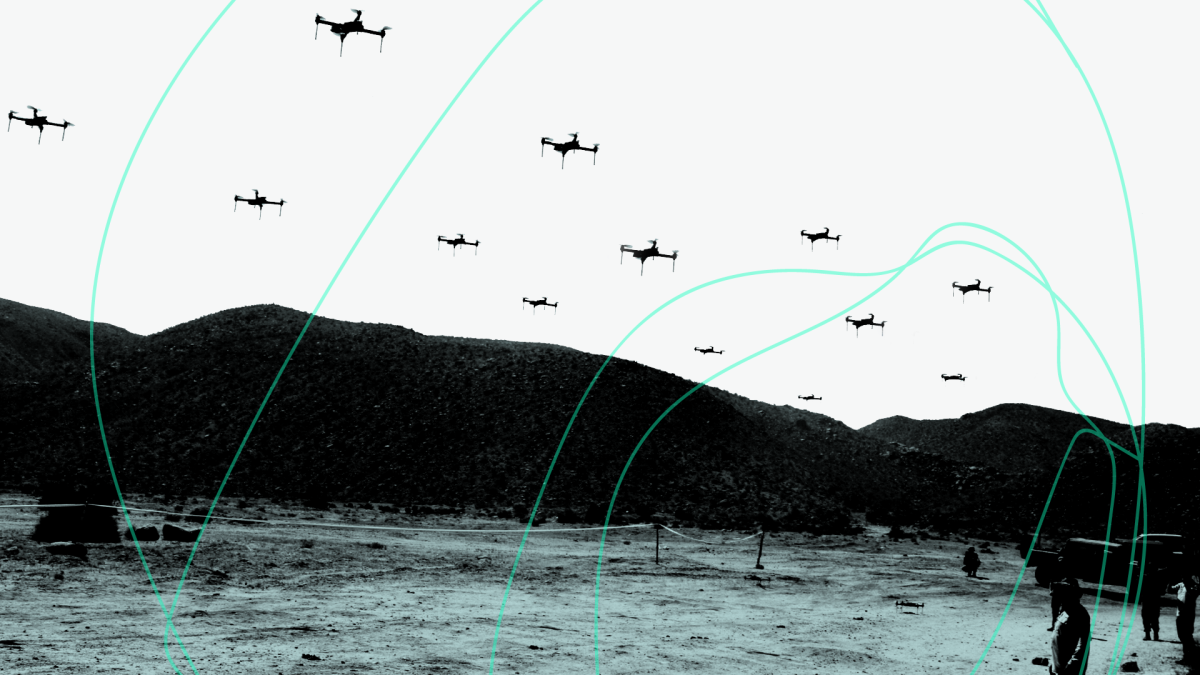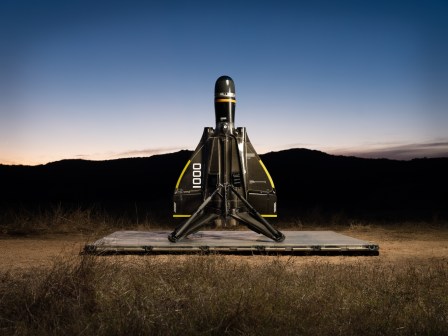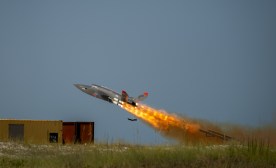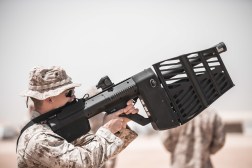Army testing out new armed quadcopter for training

The Army wants to prepare its soldiers for drone fights of the future, and one of its program executive offices is busy putting prototype training systems through their paces.
PEO Simulation, Training and Instrumentation has established an agile acquisition response team, known as STAAR, to evaluate rapid prototype capabilities. That process includes solider “touchpoints” that are part of the development process for the Army’s Synthetic Training Environment-Live Training System (STE-LTS) technology.
One of the platforms being used at the National Training Center at Fort Irwin, California, is a weaponized unmanned aerial vehicle armed with a fully automatic rifle.
“In war there’s two sides to the coin, right. There’s the good guys and the bad guys. And here … we call it the BLUFOR [blue force] and OPFOR [opposing force]. So we’re chartered to develop both BLUFOR, which is rotational training unit equipment, and OPFOR, which is threat-realistic capabilities to train against,” Curtis Leslie, director of STAAR, told DefenseScoop during a call with reporters Thursday to discuss his team’s recent efforts.
“So this weaponized drone capability is a threat that’s out there that we’ve developed rapidly, and is essentially a quadcopter outfitted with a blank-less rifle that ensures one, safety, but then two, the actual realism. So that if the rotational training unit brings out, you know, counter-UAS capabilities, they’ll be able to see that particular system and then it’s on them to utilize these STE-LTS products, these engagement systems … and then give them the ability to train against some of these modernized global threats,” he added.
The STAAR team, which was formed in 2021, recently conducted its sixth soldier touchpoint at the National Training Center to test a variety of technologies under its purview.
“Matter of fact, just we just flew [the quadcopter] a couple of hours ago … And we fly it, we take it and we shoot at targets. We’re allowing soldiers to engage with this particular system. [Drones like this] will be a part of the fight just like a tank, just like a soldier,” Leslie said.
The system uses a “surrogate” rifle while operating in a “realistic” live-training environment, he noted. Leslie’s team is currently evaluating an “E-blank” weapon and a CO2 rifle.
The quadcopter currently fires what he described as “electronic rounds” — rather than actual bullets or blank cartridges — for safety reasons.
“Essentially, you know, we’re testing one [unmanned aerial system now], but when we field this it would be a swarm capability that could be, you know, 10, 20, 30, 50 drones at one time that’s weaponized. So safety is a factor,” Leslie explained.
Meanwhile, the Army will be “increasing the realism” of training by having UAS simulate the employment of more weapons such as grenades, according to Leslie.
Additionally, a tool known as “geometric pairing” and geo-fencing will allow the service to replicate systems like loitering munitions — also known as kamikaze drones or suicide drones — without actually flying a UAS into an object and potentially causing injuries during training, he noted.






